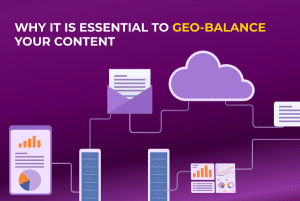Performance Marketing Trends to Follow in 2025

In 2025, the digital marketing trends are expected to change a lot due to incredible technological advancements that shift consumer behaviors and the nature of online platforms.
Let’s explore ten important performance marketing trends 2025 that will influence the strategies and success stories of businesses, covering topics from artificial intelligence to sustainability.
AI-Driven Hyper-Personalization
In 2025, AI algorithms will get better at studying user data and behaviors to give personalized content and recommendations.
As these algorithms learn from user actions and feedback, they’ll understand individual needs more accurately.
Also, by looking at past data, AI will be able to predict future user behaviors to let brands customize their offerings and messages based on predicted preferences.
Moreover, AI-powered systems will create content in real time, adjusting it as users interact.
This goes beyond basic personalization, like using names; it means making content that matches unique preferences for a more interesting and relevant experience.
Voice Search Marketing
As voice-activated devices become more common, marketers will adjust content for voice searches.
This means understanding how people naturally ask questions and making content sound like a conversation so brands stay easy to find everywhere.
Conversational marketing will also include using chatbots that talk like humans. These bots will be able to interact with users, answer questions, and help them through the customer journey.
Another amazing sub-trend in this direction will include voice-activated ads on smart speakers and virtual assistants.
In 2025, marketers will be able to grab users’ attention in this new channel by creating interesting, short ads that match the conversation’s context.
AR and VR in Marketing Campaigns
AR and VR technologies will enable brands to create immersive experiences for users.
From virtual try-on experiences for fashion items to augmented reality filters enhancing social media engagement, these technologies will redefine how consumers interact with products and brands.
Performance marketing trends 2025 expect to see virtual product showcases using VR. This will allow consumers to explore products in a three-dimensional space, providing a more in-depth understanding of features and functionalities before making a purchase decision.
Social media platforms will increasingly integrate AR for shopping experiences. Users can virtually try products through AR filters and make purchase decisions directly from the platform, blurring the lines between social engagement and e-commerce.
Sustainable and Ethical Marketing
This year, consumers will care about sustainability even more, and brands will respond by including eco-friendly messages in their marketing.
Sharing information about environmentally friendly practices, green products, and efforts to reduce carbon footprints will connect well with people who care about the environment.
Being clear about where products come from and how they are made will be a big focus. Brands will emphasize using materials responsibly, treating workers fairly, and manufacturing in a way that doesn’t harm the environment.
Brands supporting social and environmental causes will also get attention. Marketing campaigns that promote charitable initiatives or environmental conservation not only show what a brand values but also appeal to consumers who care about social and environmental issues.
Interactive Content Marketing
Interactive content will include shoppable posts, allowing users to buy products directly from the content. This smooth blend of content and shopping promises to improve the user experience and make buying things much easier.
Making content like games, quizzes, and challenges will grab people’s attention and entertain them, all while subtly sharing brand messages.
These interactive activities will not only keep users engaged but also create memorable experiences that help them remember the brand.
Getting users involved in making content is a key part of interactive marketing. Campaigns that ask customers to share their ideas, stories, or experiences build a sense of community and authenticity around the brand.
Blockchain for Ad Transparency
Blockchain, with its decentralized setup, will be applied to make ad networks transparent and resistant to fraud.
Smart contracts on blockchain platforms will guarantee that advertisers get real and verified traffic, cutting down on ad fraud.
The transparency of blockchain will also verify ad impressions and clicks. This means advertisers pay for real interactions, resulting in more accurate performance measurements and a fairer system for both advertisers and publishers.
The secure and decentralized structure of blockchain will boost data privacy. Users can have more control over their data, allowing its use only with their permission and making sure marketers handle their personal information securely.
Video Storytelling and Shorts
The popularity of short-form videos, exemplified by platforms like TikTok, will continue to rise. Brands will make interesting, short content that suits our short attention spans, focusing on creativity and storytelling within the limits of brief videos.
Vertical videos designed for mobile screens will become common. Marketers will plan campaigns specifically for vertical views, making sure they work well on popular platforms like Instagram and Snapchat.
Instead of just talking about product features, video storytelling will go deeper into brand stories.
Brands will share their values, behind-the-scenes content, and overall narrative, creating emotional connections with audiences in a way that goes beyond typical marketing.
Ephemeral Content and FOMO Marketing
Temporary content, known as ephemeral content, will be used strategically for short-lived offers and promotions. This creates urgency, pushing users to act quickly to get exclusive deals or content before it’s gone.
Brands will use ephemeral content to give sneak peeks behind the scenes, offering an exclusive look at product launches, events, or daily operations. This makes the audience feel special and connected.
Encouraging users to share their experiences with products or events through temporary content will make the Fear of Missing Out (FOMO) stronger. When users see their friends enjoying exclusive experiences, they’re more likely to join in and take part in similar opportunities.
Inclusive Influencer Marketing
Influencer marketing will remain one of the most performant performance marketing trends 2025. Brands will partner with influencers from different backgrounds, cultures, and demographics, aiming for a more inclusive representation that connects with a wider audience.
Micro-influencers, who have smaller but highly engaged followings, will become more important.
These influencers often focus on specific interests or communities, allowing brands to establish a more targeted and genuine connection with specific audience segments.
Influencers will prioritize being real and transparent in their collaborations. Audiences are more discerning now, and they appreciate content that feels genuine and relatable, aligning with an influencer’s personal values, rather than overly promotional or scripted endorsements.
Search Intent Optimization
Understanding user intent will guide content creation. Marketers will focus on making content that fits different stages of the customer journey, answering specific questions, concerns, or desires at each step to give the most relevant and valuable information.
It’s important to consider semantic search, which looks at the context and meaning behind search queries. Marketers will work on making content that is semantically relevant, covering broader topics related to what users are searching for to improve overall visibility in searches.
Search engines will prioritize giving personalized search results. Marketers will use data to understand what users like and customize content to provide more personalized search experiences. This will make users happier and more engaged.
Conclusion: Follow Performance Marketing Trends 2025 to Succeed
To succeed in the world of digital marketing in 2025, it’s crucial to pay attention to the marketing trends described above.
Success comes from combining AI-driven personalization, immersive technologies, ethical practices, and engaging content.
Embracing these innovations won’t just help marketers grab their audience’s attention but also build long-lasting connections, giving them a competitive edge in the constantly changing digital landscape.
As we move forward in this journey of new inventions and creativity, the key is to be adaptable, make data-driven decisions, and prepare for the upcoming advancements.
Are you looking to boost your digital marketing efforts and stay ahead in the game? Reach out to UCLIQ now to explore a range of solutions designed to enhance your brand’s online visibility.



